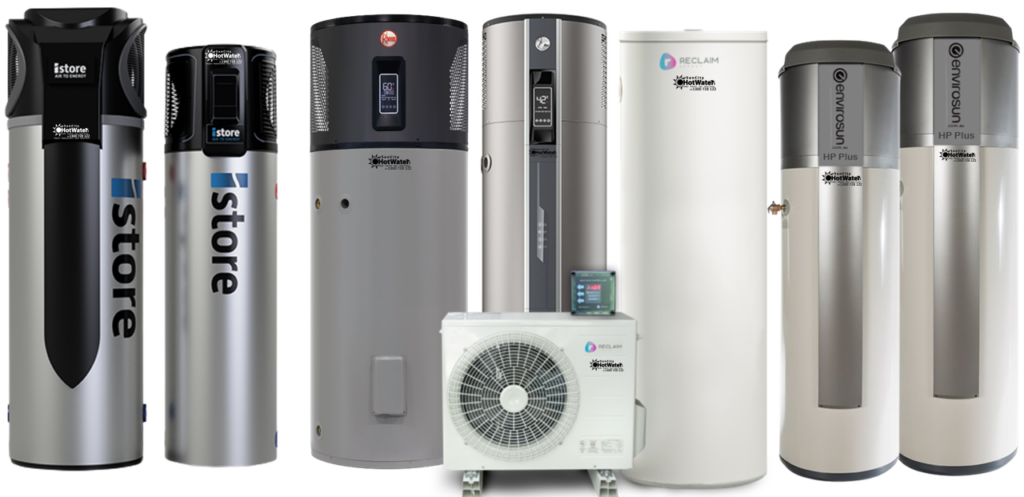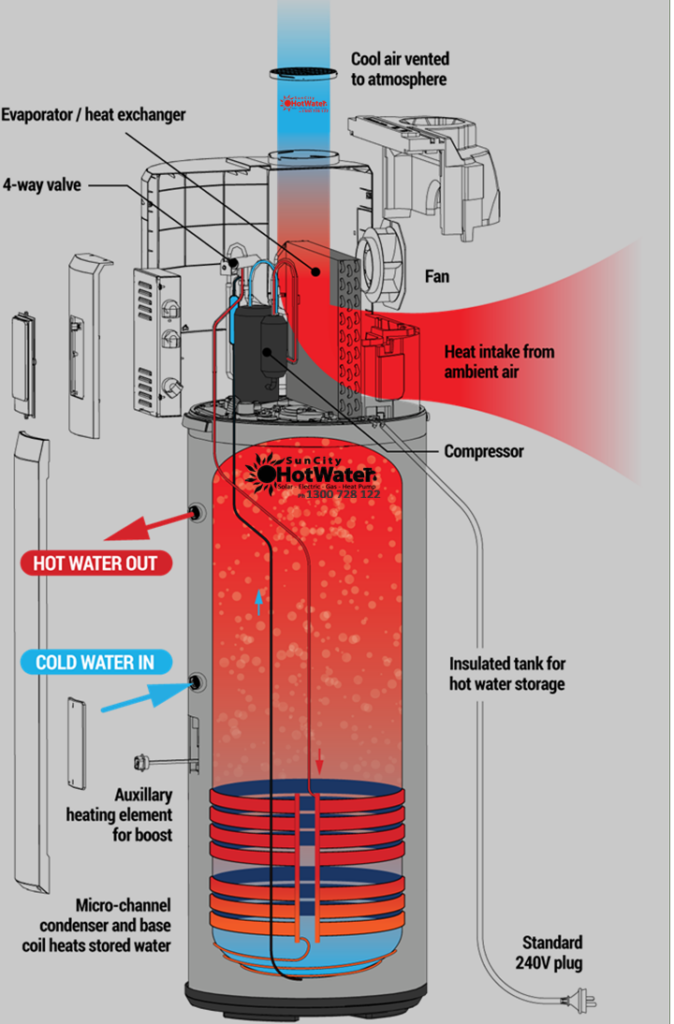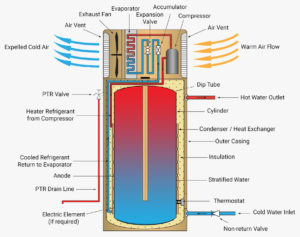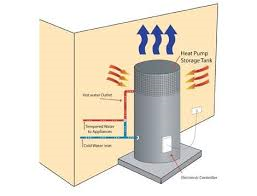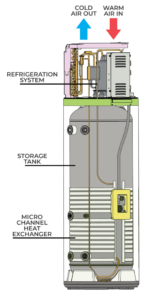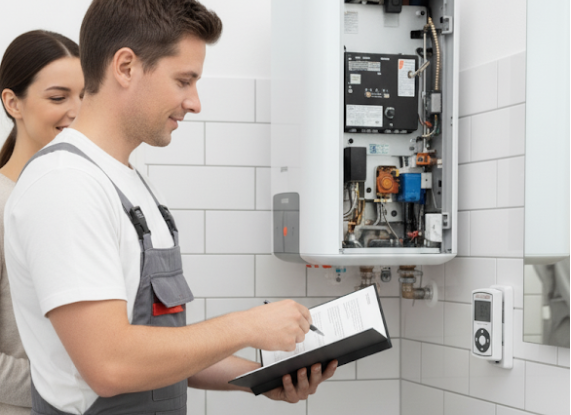Gympie Hot Water describes that heat pump hot water systems operate through a sequence of stages that make them very efficient at warming water.
First, a liquid refrigerant moves through an evaporator where it draws heat from the surrounding air and vaporises into a gas.
The gas is then pressurised by an electric compressor, increasing its temperature so it becomes warmer than the water in the cylinder.
That hot gas passes into a condenser, where it releases its heat into the water and condenses back into a liquid.
The liquid then travels through an expansion valve where its pressure is lowered, cooling it down so it can return to the evaporator and begin the cycle again.
Electricity powers the compressor and the fan, but unlike conventional electric hot water systems that heat water directly, a heat pump transfers heat from the air into the water. This enables it to move considerably more thermal energy while using much less electricity. Performance is influenced by ambient air temperature — when the air is warmer than the refrigerant, heat transfer is straightforward. In cooler conditions the process is less efficient, although many modern units are engineered to function in sub-zero temperatures. In some situations they can be fitted indoors in large ventilated areas like garages.
For the evaporator to keep absorbing heat effectively, a continuous supply of fresh air is required. An integrated fan circulates air and expels the cooled air back outside.
There are two primary heat pump hot water configurations.
Integrated or compact units house the compressor and storage tank together in a single package.
Split systems separate the tank from the compressor, similar to a split-system air conditioner, with refrigerant lines linking the two.
